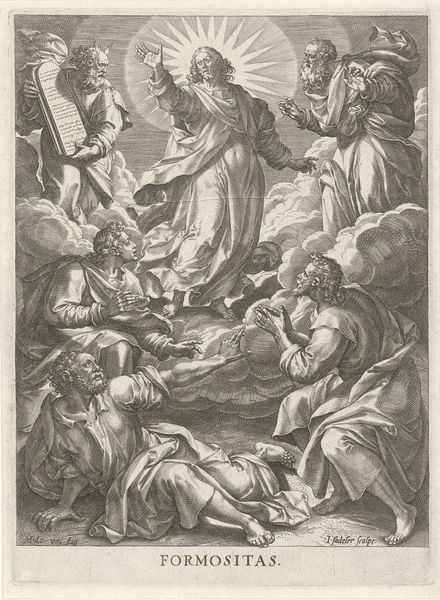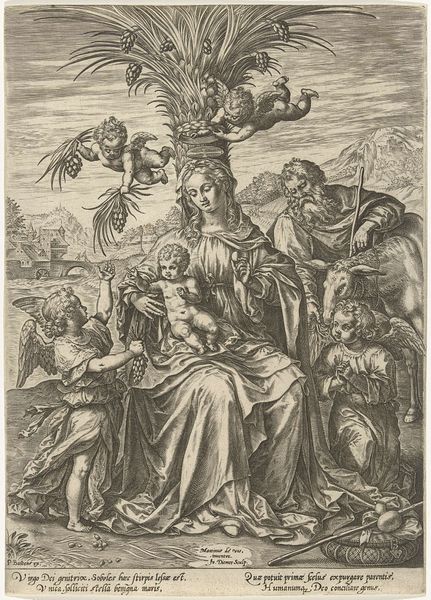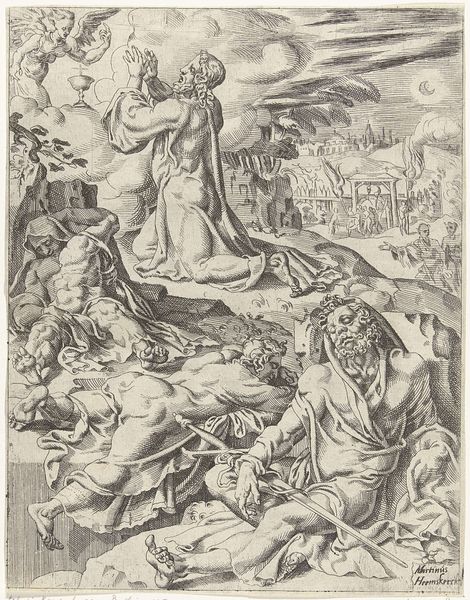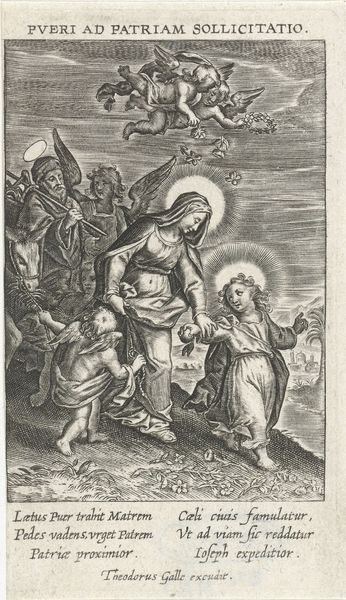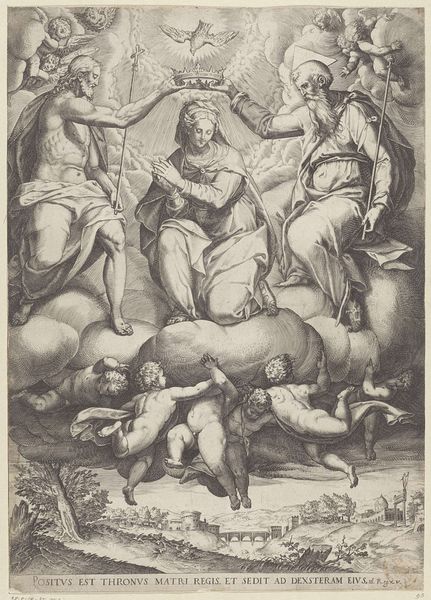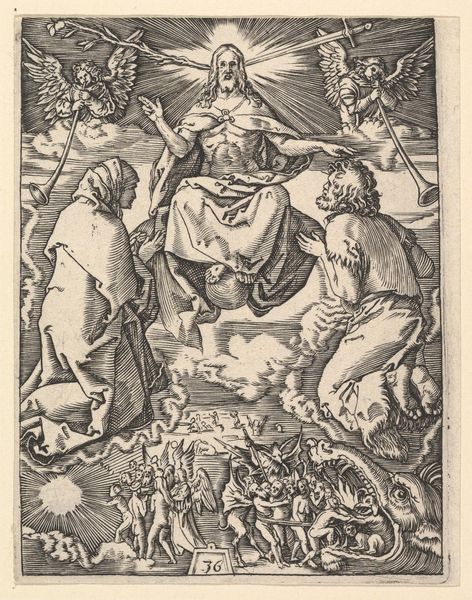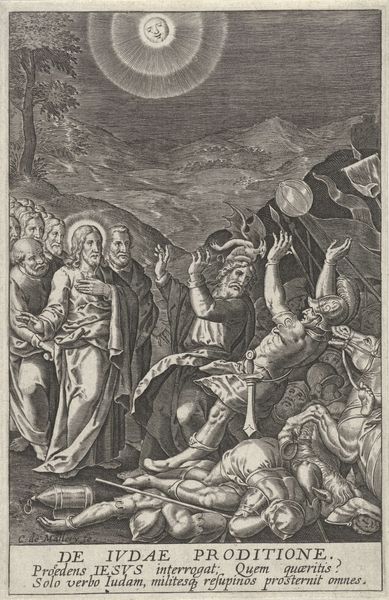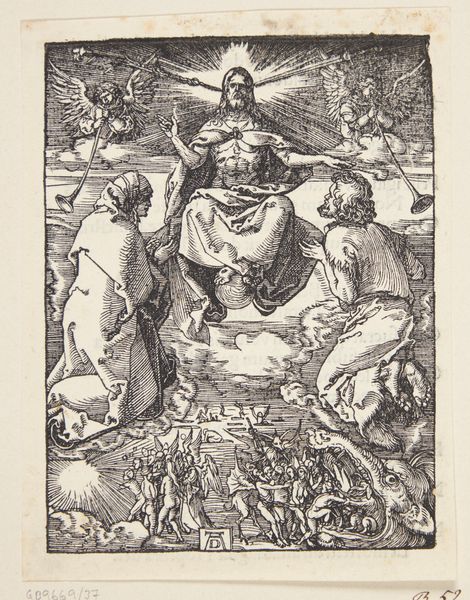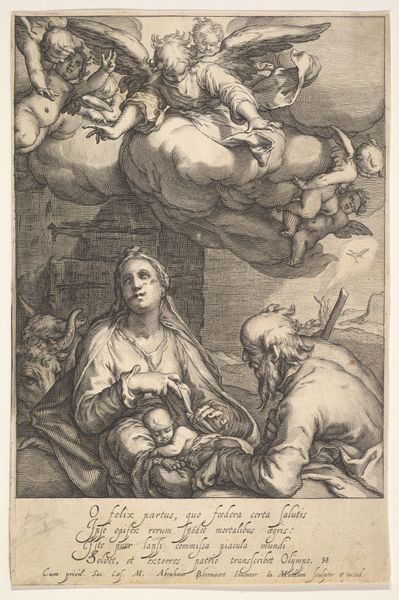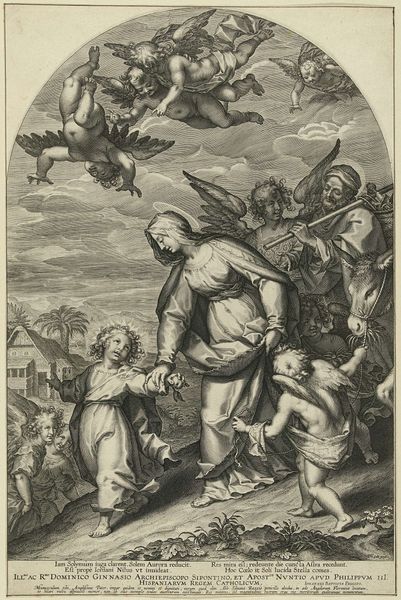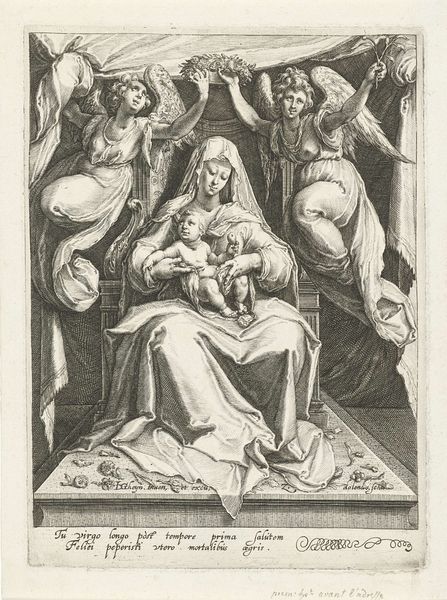
Dimensions: height 109 mm, width 71 mm
Copyright: Rijks Museum: Open Domain
Curator: This engraving, "Kroning van Maria" or "Coronation of Mary," attributed to Karel van Mallery, dates back to sometime between 1581 and 1645. It's a print, currently housed in the Rijksmuseum. Editor: Right, my first impression is that it's dramatic, even theatrical. The swirling clouds, the figures frozen in gesture...there's a lot happening. It feels very much of its time, that Baroque drama cranked up to eleven! Curator: Absolutely, and the iconography is so rich. You have the Holy Trinity present, God the Father and Christ crowning Mary, a dove symbolizing the Holy Spirit hovering above, cherubic angels swirling below. It really speaks to the complex theology of the period. I think the central narrative reinforces very specific ideologies related to divine motherhood and power within Catholicism. Editor: Exactly! It is all about power. The placement of Mary, almost floating in between the Father and Son – a powerful position of mediation, really. And that crown! An explicit symbol of her elevated status. Looking at it through a modern, intersectional lens, it speaks volumes about constructed femininity, the Madonna-whore dichotomy and the idolization, frankly, the weaponization of female purity and submissiveness. It presents a gendered vision of celestial order. Curator: I hear you, but as an artist, I'm drawn to the technical skill evident here. The detail in the drapery, the contrast of light and shadow created purely with lines. Van Mallery clearly mastered the engraver’s art and was capable to capture such rich religious allegory. I can almost feel the ethereal glow he was going after... and there's this incredible movement to the composition – Editor: Don’t get me wrong! I admire the artistry but can't separate that skill from its cultural context. These images are not just aesthetically pleasing; they are powerful statements reinforcing particular societal structures and, arguably, suppressing others. Curator: Of course, both readings are valuable. It's a dialogue. What a blessing it is that even today it stimulates reflections in all of us who observe it! Editor: A testament to art's capacity to both reflect and shape our understanding, even centuries later. It challenges us to keep engaging, keep questioning.
Comments
No comments
Be the first to comment and join the conversation on the ultimate creative platform.
